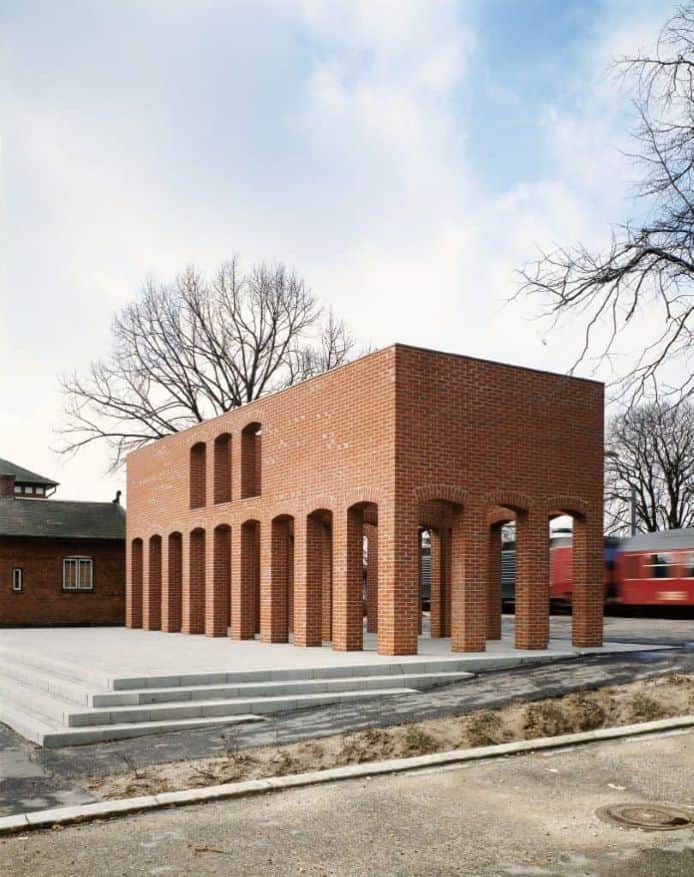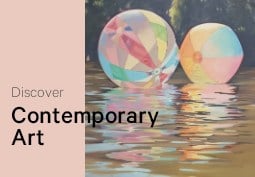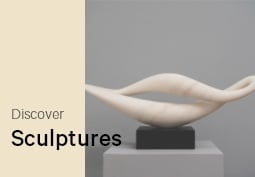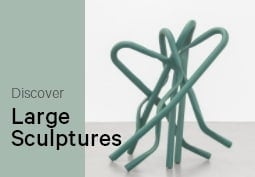Articles & Features
The Story of Per Kirkeby’s Brick Sculpture
By Alice Godwin
Per Kirkeby is one of Denmark’s most beloved artists, revered for his paintings of shifting planes and expressive gestures indebted to nature. In parallel to his luscious works with brush and canvas, Per Kirkeby’s sculptures are also widely celebrated. Perhaps none are so instantly recognizable as his sculptures of humble red bricks, a material so familiar that it is almost invisible. At once ornamental, functional, architectural, and purposeless, Kirkeby’s brick sculptures have become an iconic symbol of Danish modern art.
ARKEN Museum for Samtidskunst unveiled an exhibition devoted to Per Kirkeby’s brick sculptures in October 2023, including some that had only previously been seen in sketches. To mark the occasion, Artland takes a look back at this remarkable series.
Per Kirkeby: Artwork and Life
Born in 1938, Kirkeby grew up in the Bispebjerg district of Copenhagen, where the edifice of Grundtvig’s Church loomed large and would later play an inspiring role in the brick sculptures. Having struggled with drawing in art class, Kirkeby decided to study geology at the University of Copenhagen, and for nearly ten years he traveled to Greenland as a field geologist. He was once even confronted by a polar bear. Kirkeby’s passion for geology is often cited as an influence upon his art, which he began exploring in the 1960s as part of the irreverent Fluxus movement in Denmark.
In the 1970s, Kirkeby’s attention shifted to painting, and he became associated with a generation of German Neo-Expressionist artists, including Georg Baselitz and AR Penck. At the same time, Kirkeby turned his hand to poetry, architecture, sculpture, writing and directing, designing costumes and sets, and even the visual effects for films by close friend Lars von Trier. His reputation soared through the 1980s and 1990s, representing Denmark at the Venice Biennale (1980, 1993, and 1997) and exhibiting at Documenta in Kassel, Germany (1982 and 1992). Today, Per Kirkeby’s archive can be found at the Museum Jorn in Silkeborg.
Per Kirkeby Artworks: From Painting to Bricks
Though at first glance, Kirkeby’s paintings and brick sculptures appear to have little in common, the artist insisted that they share common ground. Both explore qualities of structure, space, and surface, while the strata of materials and motifs in both mediums recall Kirkeby’s training as a geologist and lessons in sedimentation and erosion.
Kirkeby’s Brick Sculptures
Beginning in 1966, Kirkeby created more than 150 brick sculptures throughout his lifetime. Initially, Kirkeby was drawn to the essential qualities of bricks as a unit of architectural design and a symbol of human civilization—being the same size as the human hand. While Kirkeby was undoubtedly alluding to the simplicity and order of Minimalism at the time, the Danish artist was also looking beyond aesthetic purity to the pictorial and narrative possibilities of bricks.
The 1960s
Works like Kopenhagen I-II (1965–66) reveal Kirkeby’s early experiments with indoor, loosely stacked structures, which toy with the ornamental patterns of bricks and their functional use. The original versions were shown in a gallery on Copenhagen’s Holbergsgade in 1965 and destroyed after the show, but later reconstructed with yellow bricks—a cheaper material, traditionally used in utilitarian construction, as opposed to red bricks used in decorative public projects. Kirkeby employed these red bricks for the first time in 1966 for House. Fence. Brick.

Louisiana Museum of Modern Art, acquired with the support of the Olga and Esper Boel Fund
Photo: Poul Buchard/Brondum & Co.
The 1970s
A journey to Central America in the early 1970s sparked a new direction for the brick sculptures as site-specific monuments. Kirkeby had been deeply influenced by the Mayan architecture he had encountered and set about combining the ruins with familiar Danish bricks. The first large-scale sculpture appeared in 1973 in the town of Ikast, Jutland, as a children’s playhouse. Through this decade, works such as Essen VIII (Säulenstumpf) (1977) conjured the steps of a towering Mayan temple, while Essen IX (Tor) (1977) evoked a gateway, and other brick structures were even incorporated into Kirkeby’s paintings.
The 1980s and 1990s
The brick sculptures would continue to explore notions of space through an architectural lens in the 1980s and 1990s. During this period, Kirkeby became ever more ambitious, unveiling a new brick monument at Louisiana Museum of Modern Art’s local station, Humlebæk, in 1994. These sculptures are predominantly not functional, though Kirkeby did create brick bus shelters for the towns of Munster and Neuss in Germany. The brick works linger somewhere between sculpture and architecture, inviting the viewer into a space, only to find it is purely decorative. Kirkeby delights in these shifts in our perception of space. For Kirkeby, the brick works were “buildings without purpose.”
Per Kirkeby On View
Today, Kirkeby’s brick monuments can be found across Denmark and Europe, from the German National Library in Frankfurt to a Norwegian fjord in Nordland. The works gained international recognition when they were shown at the Venice Biennale in 1976, the exhibition Skulptur. Projekte in Munster in 1987, and Documenta in 1982 and 1992. In 2019, the first volume of The Complete Bricks was published by Walther König as part of a three-volume catalog raisonné, cementing their significance within Kirkeby’s storied career.
Relevant sources to learn more
Read more articles from Artland Magazine
Boundary-Breaking Sculptors of the 20th Century: How Louise Nevelson Redefined the Materials of Sculpture
Remembering Claes Oldenburg: From The Store to the Colossal Pop Art Sculptures
A New Kind Of Form. The Radically Reductive Sculptures of Brancusi
Other relevant sources:
Bricks – Per Kirkeby at ARKEN
Wondering where to start?







